
Kinetis® KW41Z-2.4 GHz Dual Mode: Bluetooth® Low Energy and 802.15.4 Wireless Radio Microcontroller (MCU) based on Arm® Cortex®-M0+ Core
Please check the new online NFC Antenna Tool for tag and reader devices.
The NTAG I2C plus combines a passive NFC interface with a contact I2C interface. Designed to be an enabler for NFC in home-automation and consumer applications, this connected NFC tag is a fast, cost effective way to add tap-and-go connectivity to just about any electronic device.
These devices maintain full backward compatibility with first-generation NTAG I2C while adding advanced features for password protection, a full memory-access configuration from both interfaces, and an originality signature for protection against cloning.
Commitment to Longevity
NT3H2211 and NT3H2111 are ready to support your development today, tomorrow and beyond through its longevity program. The Product Longevity program ensures a stable supply of products for your embedded designs
Part numbers include: NT3H2111W0FHK, NT3H2111W0FT1, NT3H2111W0FTT, NT3H2211W0FT1, NT3H2211W0FTT.
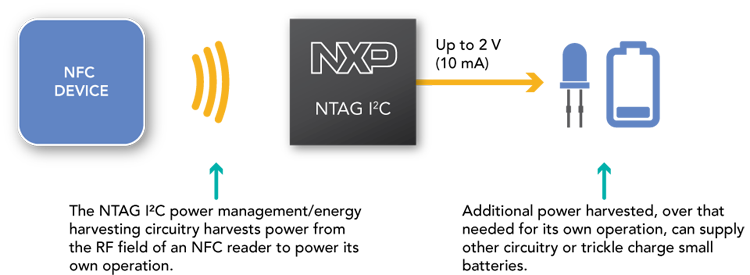
Alternatively, the power harvested by the NTAG I2C tag chip can also be applied directly as a source of power for devices requiring less energy, such as low power microcontrollers, sensors, and indicators.
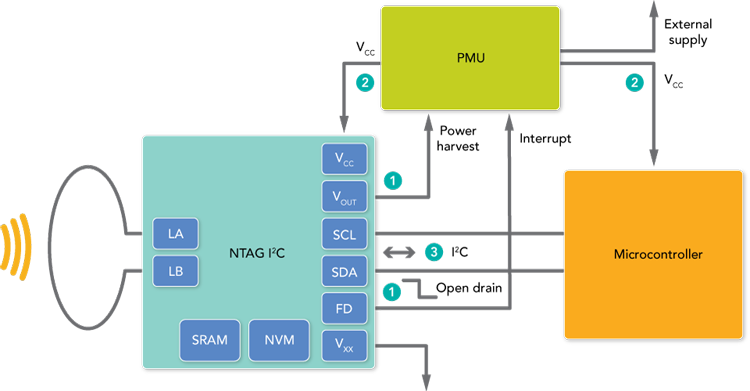
The NTAG I2C tag chip’s energy harvesting capability and Field Detect (FD) functions work together to help support power management. Upon application of the RF field to the antenna, the FD output asserts low, and the energy harvested by the NTAG I2C tag chip from the RF field is output (VOUT) to a Power Management Unit (PMU) (1). The PMU distributes received power to both the NTAG I2C tag chip and the microcontroller (2), which allows the I2C bus to become active (3), enabling communication.
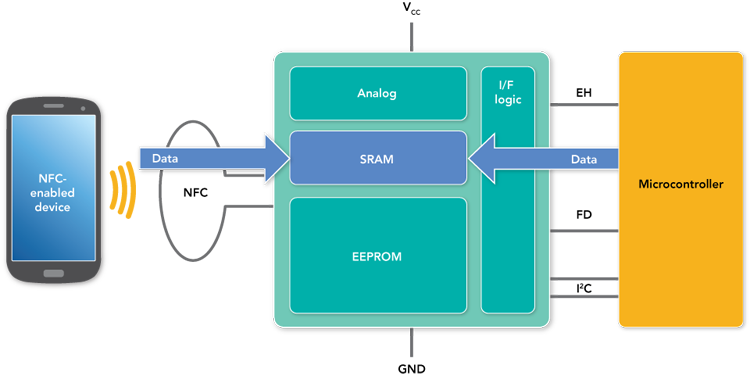
For data transfer after communication has been initiated, the on-chip, 64-byte SRAM preserves EEPROM access limits by supporting a data pass-through option. In this case, data flows from the NFC interface through an SRAM buffer to the I2C serial bus interface or vice versa. The NTAG I2C tag chip operates as a modem when in this mode.
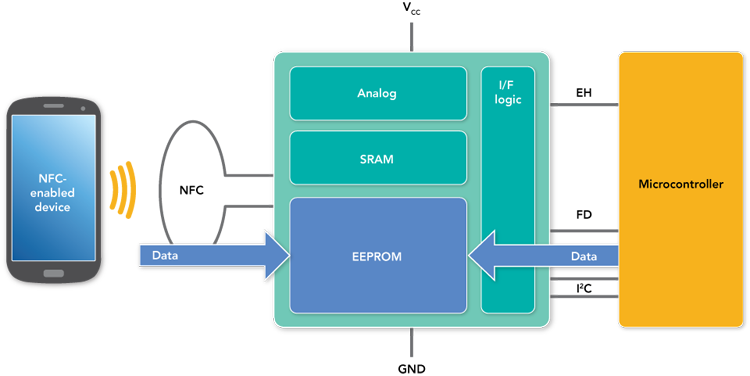
When manufacturers embed the NTAG I2C tag chip into products, users can download information via the RF interface to those products even when they are not receiving power, because the NTAG I2C tag chip acts as a connection between the user’s NFC-enabled mobile device and the sealed and packaged product.
With a power to the device off, the contactless NFC interface can still operate, receiving data that the NTAG I2C tag chip stores in nonvolatile EEPROM memory. Later, when the device has power, the microprocessor can access the previously written data via the I2C serial bus interface. Similarly, the microprocessor can write data to the EEPROM while powered for later access via the NFC interface whether or not the device has power.




Quick reference to our documentation types.
1-5 of 13 documents
Please wait while your secure files are loading.
2 hardware offerings
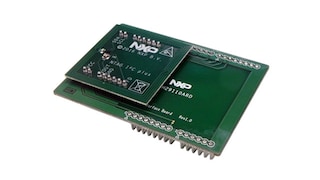
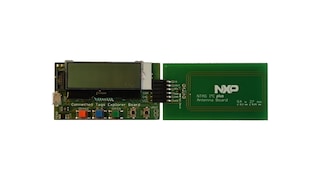
4 hardware offerings
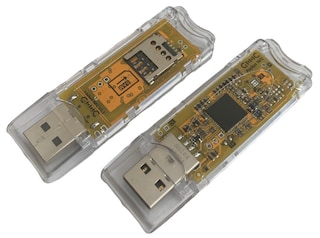
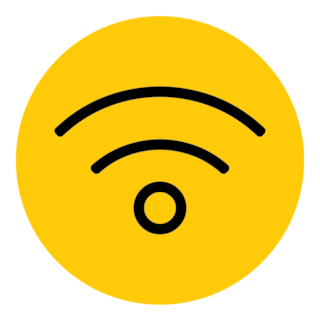
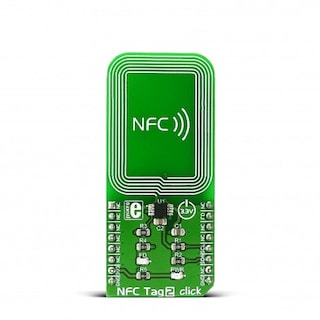

To find additional partner offerings that support this product, visit our Partner Marketplace.
Quick reference to our software types.
2 software files
Note: For better experience, software downloads are recommended on desktop.
Please wait while your secure files are loading.
1 software offerings

To find additional partner offerings that support this product, visit our Partner Marketplace.
2 engineering services


There are no results for this selection.
To find additional partner offerings that support this product, visit our Partner Marketplace.
9 trainings
Additional trainings are available. View our featured partner trainings.
5 trainings
To find additional partner offerings that support this product, visit our Partner Marketplace.